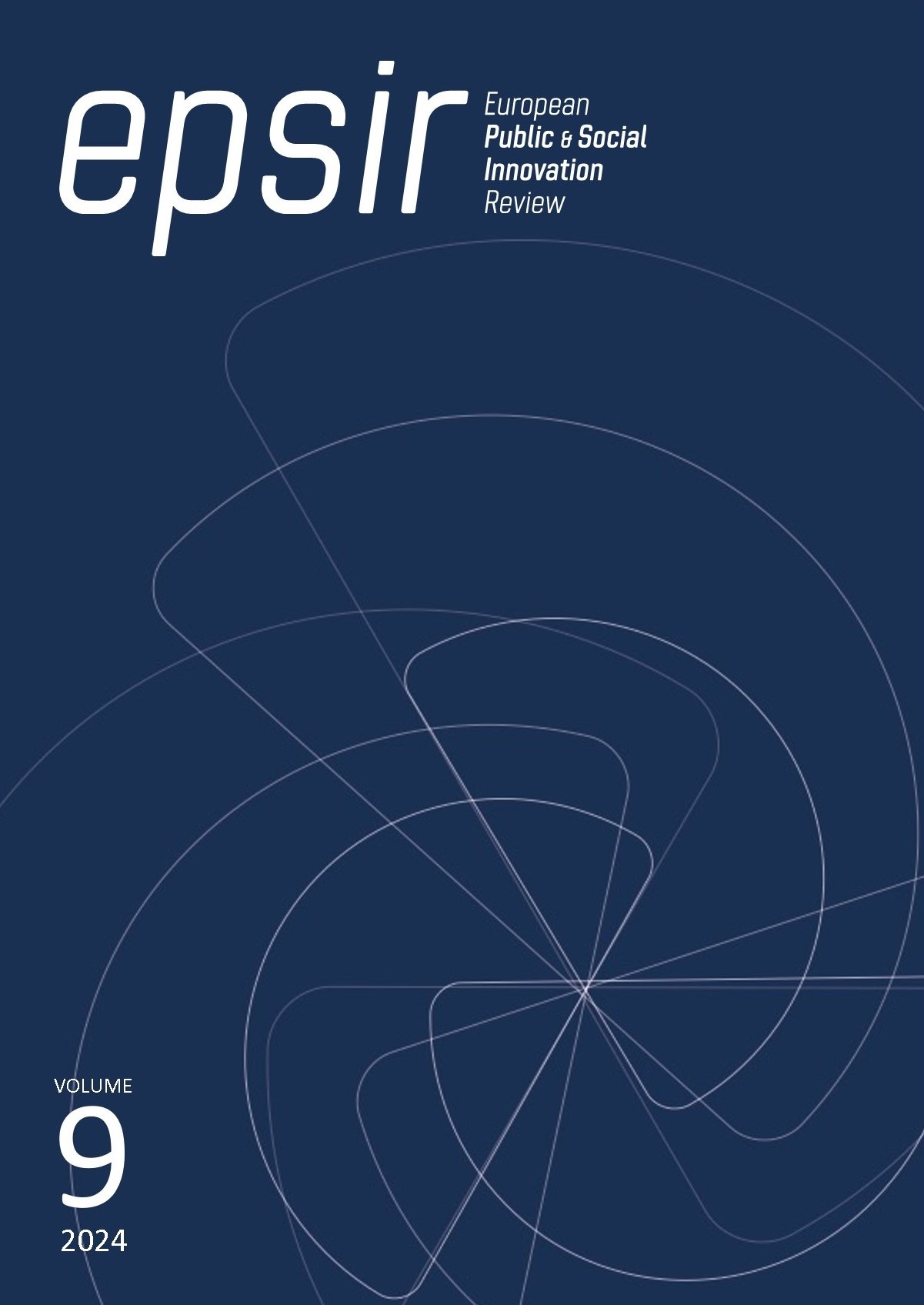Study of the perception and evaluation of contemporary music: didactic implications
DOI:
https://doi.org/10.31637/epsir-2024-743Keywords:
music education, music didactics, contemporary music, music appreciation, content analysis, qualitative methodology, teacher education, university studentsAbstract
Introduction: Contemporary music has not achieved a significant role in music education. The limited inclusion of contemporary works and composers in educational levels reduces students’ ability to appreciate, value and enjoy this repertoire. The study analyzes the experience of a group of Primary Education Degree students who volutarily attended a contemporary music concert. The aim is to identify the appreciative strategies and beliefs of the participants regarding the educational interest of contemporary repertoire. Methodology: The study employs a qualitative methodology and inductive content analysis of personal documents prepared by the participants (27 students without musical training) after the concert. Results: The results of the analysis are structured around three thematic categories: perception, evaluation, and educational interest. Discussions: The results are interpreted and discussed by establishing connections with the findings of previous research. Conclusions: The results have practical implications in the field of music education, as they allow the design of educational interventions that improve the understanding, appreciation, and enjoyment of contemporary repertoire.
Downloads
References
Botella, A. M. y Lerma, N. (2016). Estudio comparativo de dos metodologías aplicadas para la compresión de la música contemporánea en la Educación Secundaria Obligatoria. Revista Electrónica Complutense de Investigación En Educación Musical - RECIEM, 13. https://doi.org/10.5209/reciem.48423 DOI: https://doi.org/10.5209/RECIEM.48423
Deliege, I. y El Ahnmadi, A. (1990). Mechanisms of Cue Extraction in Musical Groupings: A Study of Perception on Sequenza VI for Viola Solo by Luciano Berio. Psychology of Music, 18(1), 18–44. https://doi.org/10.1177/0305735690181003 DOI: https://doi.org/10.1177/0305735690181003
Díaz, M. y Muñoz, E. (2012). La musique contemporaine à l’école: entre le savoir musical et apprentissage créatif. En M. Giglio y S. Boechat-Heer (Eds.), Innovations et réformes éducatives dans la formation des enseignats. Actes de la recherche (pp. 33–41).
Donnat, O. (2004). Les univers culturels des Français. Sociologie et Sociétés, 36(1), 87–103. https://doi.org/10.7202/009583ar DOI: https://doi.org/10.7202/009583ar
García-Laborda, J. M. (1992). Didáctica de la nueva música. RIFOP: Revista Interuniversitaria de Formación Del Profesorado, 13, 87–98.
Graf, L. K. M. y Landwehr, J. R. (2017). Aesthetic pleasure versus aesthetic interest: The two routes to aesthetic liking. Frontiers in Psychology, 8. https://doi.org/10.3389/fpsyg.2017.00015 DOI: https://doi.org/10.3389/fpsyg.2017.00015
Imberty, M. (1993). How do we perceive atonal music? Suggestions for a theoretical approach. Contemporary Music Review, 9(1–2), 325–337. https://doi.org/10.1080/07494469300640541 DOI: https://doi.org/10.1080/07494469300640541
Lizandra, J. y Peiró-Velert, C. (2020). Las relaciones sociales y su papel en la motivación hacia la práctica de actividad física en adolescentes: Un enfoque cualitativo. Retos, 37, 41–47. DOI: https://doi.org/10.47197/retos.v37i37.70374
Martínez, M. (2006). La investigación cualitativa (síntesis conceptual). Revista de Investigación En Psicología, 9(1), 123–146. https://doi.org/10.15381/rinvp.v9i1.4033 DOI: https://doi.org/10.15381/rinvp.v9i1.4033
Mateos, D. (2007). La música contemporánea y los futuros maestros de educación musical. (Tesis Doctoral). Universidad de Málaga, Málaga.
Mateos, D. (2011). Amenazas a la educación y el consumo de la música clásica contemporánea. Eufonía: Didáctica de La Música, 53.
Matoš, N. y Čorić, A. (2018). Levels of Music Appreciation as a Challenge for Music Curriculum. “Music in Society” The Collection of Papers, 10. https://doi.org/10.51515/issn.2744-1261.2018.10.87 DOI: https://doi.org/10.51515/issn.2744-1261.2018.10.87
Meyer. (2001). Emoción y significado en la música. Alianza.
Urrutia, A. y Díaz, M. (2013). La Música Contemporánea en la Educación Secundaria: características, prácticas docentes y posicionamiento del profesorado. CPU-e, Revista de Investigación Educativa, 17, 1–40. DOI: https://doi.org/10.25009/cpue.v0i17.413
Urrutia, A. (2012). La presencia y el uso de la música contemporánea en la Educación Secundaria: un estudio en la comunidad autónoma del País Vasco (Tesis Doctoral). Universidad del País Vasco, Bilbao.
Valls, M. A. y Rusinek, G. (2010). La música contemporánea en el aula de Primaria. En M. E. Riaño (Ed.), Actas del Seminario Internacional de Investigación en Educación Musical (pp. 244–248).
Downloads
Published
How to Cite
Issue
Section
License
Copyright (c) 2024 Ana María Botella Nicolás; Francisco González-Ferrandis (Autor de Correspondencia)

This work is licensed under a Creative Commons Attribution-NonCommercial-NoDerivatives 4.0 International License.
Authors who publish with this journal agree to the following terms:- Authors retain copyright and grant the journal right of first publication with the work simultaneously licensed under Creative Commons Non Commercial, No Derivatives Attribution 4.0. International (CC BY-NC-ND 4.0.), that allows others to share the work with an acknowledgement of the work's authorship and initial publication in this journal.
- Authors are able to enter into separate, additional contractual arrangements for the non-exclusive distribution of the journal's published version of the work (e.g., post it to an institutional repository or publish it in a book), with an acknowledgement of its initial publication in this journal.
- Authors are permitted and encouraged to post their work online (e.g., in institutional repositories or on their website) prior to and during the submission process, as it can lead to productive exchanges, as well as earlier and greater citation of published work (See The Effect of Open Access).



